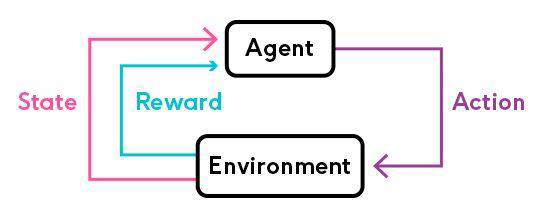
The hyperparameter is a machine learning parameter that controls the learning process. Other parameters are derived from training. These are examples of hyperparameters. To learn more about hyperparameters, check out this article. It will help to decide which one you should use. Then, use that knowledge to optimize your machine learning models. We'll cover some examples of hyperparameters, their importance, and how to use them.
Model hyperparameters
Hyperparameters can be described as mathematical parameters that influence the predictive power of a model. These parameters are typically used to calculate the penalty for l2 in liblinear. They are variables that define a family or functions. The parameters' fixed values determine which line will be used. Hyperparameters also have the same effect but in different situations. You should consider the type and predictive power of the problem you are modeling when choosing hyperparameters.
The best model hyperparameters enhance the performance of the machine-learning model. A good model should be able to generate f(x) that is as close to its expected value as possible. This algorithm uses Bayesian optimization and takes into account any hyperparameters which seem promising based upon previous iterations. The process will then analyze these settings to determine if they are suitable for better results. This method can also help you predict problems that do not have any data.

Surrogate function
Surrogate formulas are the most common type of mathematical models. They can be used to approximate the objective function. There are several ways they can be created. A Gaussian process can be used to create a probability distribution. A Gaussian process produces a posterior that is then updated with new information. You can then use the posterior to determine global minima. This technique has many uses, from pharmaceutical product development to autonomous vehicles.
Another method for finding the optimal hyperparameters is to use a Gaussian Process. A Gaussian distribution is a probability over all functions of a domain. It assists in the estimation of optimal model hyperparameters. The model can be used to find a hyperparameter that minimizes the RMSE or error rate. The algorithm's primary function is to reduce the model's error rate, or RMSE.
Grid search
To improve the model's performance, a grid-search predictor uses hyperparameters. An estimator parameter is used to verify the model's hyperparameters. N_jobs is the number of parallel processes. The default value is 1. However, if you want to use all processors, you must set n_jobs to 0.
A grid search can optimize a Random forest classifier by using hyperparameters. This classifier can be used to classify multiclass and binary data sets. The grid search is a useful tool to overcome the overfitting constraint. The grid search can also be used to perform stratified cross validation to overcome the overfitting restriction. It is extremely precise.

Random search
While both methods are designed to minimize estimated errors, random search is more effective. Grid search uses fixed meshes and random search combine parameters in irregular patterns. Random search can produce better results when there are many parameter combinations. This method has been proven to be effective in many situations. We will present the advantages of random searching for hyperparameters in FNN models.
FAQ
Who is leading today's AI market
Artificial Intelligence, also known as computer science, is the study of creating intelligent machines capable to perform tasks that normally require human intelligence.
Today, there are many different types of artificial intelligence technologies, including machine learning, neural networks, expert systems, evolutionary computing, genetic algorithms, fuzzy logic, rule-based systems, case-based reasoning, knowledge representation and ontology engineering, and agent technology.
Much has been said about whether AI will ever be able to understand human thoughts. However, recent advancements in deep learning have made it possible to create programs that can perform specific tasks very well.
Google's DeepMind unit in AI software development is today one of the top developers. Demis Hassabis founded it in 2010, having been previously the head for neuroscience at University College London. In 2014, DeepMind created AlphaGo, a program designed to play Go against a top professional player.
Why is AI so important?
In 30 years, there will be trillions of connected devices to the internet. These devices will include everything, from fridges to cars. Internet of Things (IoT), which is the result of the interaction of billions of devices and internet, is what it all looks like. IoT devices will be able to communicate and share information with each other. They will also be capable of making their own decisions. Based on past consumption patterns, a fridge could decide whether to order milk.
It is predicted that by 2025 there will be 50 billion IoT devices. This is an enormous opportunity for businesses. But it raises many questions about privacy and security.
Are there potential dangers associated with AI technology?
Of course. There will always be. AI is seen as a threat to society. Others believe that AI is beneficial and necessary for improving the quality of life.
AI's potential misuse is the biggest concern. AI could become dangerous if it becomes too powerful. This includes autonomous weapons, robot overlords, and other AI-powered devices.
AI could eventually replace jobs. Many people are concerned that robots will replace human workers. Others believe that artificial intelligence may allow workers to concentrate on other aspects of the job.
Some economists even predict that automation will lead to higher productivity and lower unemployment.
How does AI work
An algorithm refers to a set of instructions that tells computers how to solve problems. An algorithm can be described as a sequence of steps. Each step has a condition that dictates when it should be executed. A computer executes each instruction sequentially until all conditions are met. This repeats until the final outcome is reached.
Let's say, for instance, you want to find 5. It is possible to write down every number between 1-10, calculate the square root for each and then take the average. It's not practical. Instead, write the following formula.
sqrt(x) x^0.5
This is how to square the input, then divide it by 2 and multiply by 0.5.
Computers follow the same principles. The computer takes your input and squares it. Next, it multiplies it by 2, multiplies it by 0.5, adds 1, subtracts 1 and finally outputs the answer.
What is the latest AI invention
Deep Learning is the newest AI invention. Deep learning is an artificial Intelligence technique that makes use of neural networks (a form of machine learning) in order to perform tasks such speech recognition, image recognition, and natural language process. It was invented by Google in 2012.
The most recent example of deep learning was when Google used it to create a computer program capable of writing its own code. This was accomplished using a neural network named "Google Brain," which was trained with a lot of data from YouTube videos.
This allowed the system to learn how to write programs for itself.
IBM announced in 2015 they had created a computer program that could create music. Also, neural networks can be used to create music. These are called "neural network for music" (NN-FM).
What are the potential benefits of AI
Artificial Intelligence, a rapidly developing technology, could transform the way we live our lives. Artificial Intelligence is already changing the way that healthcare and finance are run. And it's predicted to have profound effects on everything from education to government services by 2025.
AI has already been used to solve problems in medicine, transport, energy, security and manufacturing. The possibilities for AI applications will only increase as there are more of them.
What makes it unique? Well, for starters, it learns. Unlike humans, computers learn without needing any training. Computers don't need to be taught, but they can simply observe patterns and then apply the learned skills when necessary.
AI stands out from traditional software because it can learn quickly. Computers can process millions of pages of text per second. They can instantly translate foreign languages and recognize faces.
It can also complete tasks faster than humans because it doesn't require human intervention. It can even surpass us in certain situations.
A chatbot named Eugene Goostman was created by researchers in 2017. It fooled many people into believing it was Vladimir Putin.
This is proof that AI can be very persuasive. AI's ability to adapt is another benefit. It can be trained to perform new tasks easily and efficiently.
Businesses don't need to spend large amounts on expensive IT infrastructure, or hire large numbers employees.
What's the future for AI?
The future of artificial intelligence (AI) lies not in building machines that are smarter than us but rather in creating systems that learn from experience and improve themselves over time.
In other words, we need to build machines that learn how to learn.
This would mean developing algorithms that could teach each other by example.
We should also look into the possibility to design our own learning algorithm.
You must ensure they can adapt to any situation.
Statistics
- In the first half of 2017, the company discovered and banned 300,000 terrorist-linked accounts, 95 percent of which were found by non-human, artificially intelligent machines. (builtin.com)
- That's as many of us that have been in that AI space would say, it's about 70 or 80 percent of the work. (finra.org)
- By using BrainBox AI, commercial buildings can reduce total energy costs by 25% and improves occupant comfort by 60%. (analyticsinsight.net)
- In 2019, AI adoption among large companies increased by 47% compared to 2018, according to the latest Artificial IntelligenceIndex report. (marsner.com)
- A 2021 Pew Research survey revealed that 37 percent of respondents who are more concerned than excited about AI had concerns including job loss, privacy, and AI's potential to “surpass human skills.” (builtin.com)
External Links
How To
How to create Google Home
Google Home, an artificial intelligence powered digital assistant, can be used to answer questions and perform other tasks. It uses sophisticated algorithms and natural language processing to answer your questions and perform tasks such as controlling smart home devices, playing music, making phone calls, and providing information about local places and things. With Google Assistant, you can do everything from search the web to set timers to create reminders and then have those reminders sent right to your phone.
Google Home seamlessly integrates with Android phones and iPhones. This allows you to interact directly with your Google Account from your mobile device. An iPhone or iPad can be connected to a Google Home via WiFi. This allows you to access features like Apple Pay and Siri Shortcuts. Third-party apps can also be used with Google Home.
Google Home, like all Google products, comes with many useful features. It can learn your routines and recall what you have told it to do. When you wake up, it doesn't need you to tell it how you turn on your lights, adjust temperature, or stream music. Instead, you can simply say "Hey Google" and let it know what you'd like done.
Follow these steps to set up Google Home:
-
Turn on Google Home.
-
Hold the Action Button on top of Google Home.
-
The Setup Wizard appears.
-
Click Continue
-
Enter your email and password.
-
Click on Sign in
-
Your Google Home is now ready to be